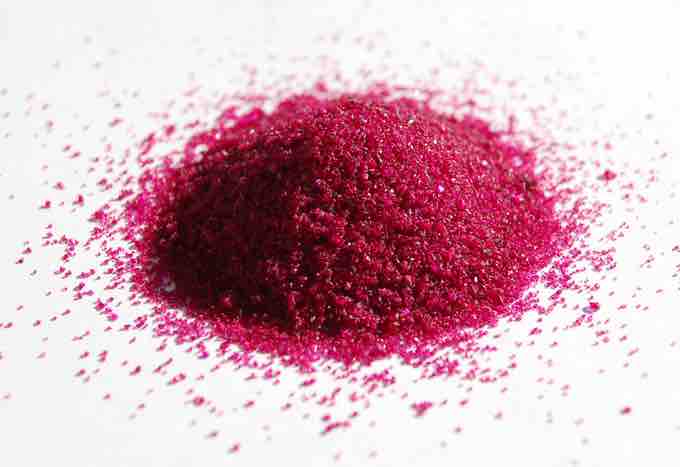Inorganic Hydrates
"Hydrate" is a term used in inorganic chemistry and organic chemistry to indicate that a substance contains loosely bonded water. The name of a hydrate follows a set pattern: the name of the ionic compound followed by a numerical prefix and the suffix "-hydrate." For example, CuSO4 · 5 H2O is "copper(II) sulfate pentahydrate." The notation of hydrous compound · nH2O, where n is the number of water molecules per formula unit of the salt, is commonly used to show that a salt is hydrated. The "
The Greek prefixes used in naming hydrates for numbers 1/2 through 10 are as follows:
- 1/2: hemi-
- 1: mono-
- 2: di-
- 3: tri-
- 4: tetra-
- 5: penta-
- 6: hexa-
- 7: hepta-
- 8: octa-
- 9: nona-
- 10: deca-
A hydrate that has lost water is referred to as an anhydride. An anhydride can normally lose water only with significant heating. A substance that no longer contains any water is referred to as anhydrous.
Organic Hydrates
In organic chemistry, hydrates tend to be rarer. An organic hydrate is a compound formed by the addition of water or its elements to another molecule. For example, ethanol, CH3–CH2–OH, can be considered a hydrate of ethene, CH2=CH2, formed by the addition of H to one C and OH to the other C. Another example is chloral hydrate, CCl3–CH(OH)2, which can be formed by the reaction of water with chloral, CCl3–CH=O.
Molecules have been labeled as hydrates for historical reasons. Glucose, C6H12O6, was originally thought of as C6(H2O)6 and was described as a carbohydrate, but this is a very poor description of its structure given what is known about it today. Methanol is often sold as "methyl hydrate," implying the incorrect formula CH3OH2. The correct formula is CH3–OH.

Cobalt(II) chloride hexahydrate
CoCl2·6H2O has the systematic name cobalt(II) chloride hexahydrate.